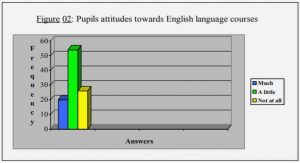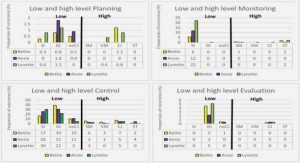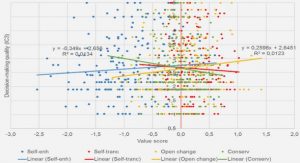Get Complete Project Material File(s) Now! »
Tools to understand livestock origin and diversity
Genetic tools
Genetic tools have a central role in many biological investigations. For instance, genetic analysis can provide insights into diverse investigations such as evolutionary histories of species (Avise et al. 1987), interactions and relationships among populations (Luikart et al. 2001; Meadows et al. 2007), or individuals (Queller et al. 1993), evaluation of the success of specific management actions and conservation (Manceau et al. 1999b ; Vernesi et al. 2002), population and behavioral ecology (Scribner & Chesser 2001) and food habits (Symondson 2002). DNA-based markers have been developed since the 1970s (Karp et al. 1997; Sunnucks 2000) but have only been actively applied to studies of animal domestication and diversity since the early 1990s (Loftus et al. 1994).
A series of recent genetic studies has revealed the remarkably complex picture of livestock domestication. By comparing mitochondrial (mtDNA) and nuclear DNA sequences of modern breeds with their potential wild ancestors, we have gained new insights into the timing and location of domestication event(s) that produced the farm animals. Recognizing of real number of domestication events and the locations in which they took place are very important for determination of our approach to conserving livestock biodiversity resources in the future (Bruford et al. 2003).
Choosing molecular markers
To help understand the origins of domestication of a livestock species, the ideal molecular marker should have several characteristics. First, it should be sufficiently conserved to allow the identification of the wild taxon or population from which the species descends. Second, the marker should be variable and structured enough across the geographical range of the wild ancestor so that the approximate locality of domestication can be identified. Third, the marker should evolve at a rapid but constant rate — this feature allows the origin of a particular polymorphism to be dated. This combination of characteristics is difficult to find, but fortunately, in animal evolutionary studies, there is such a marker: mtDNA. At present, mtDNA is by far the most widely used molecular tool in domestication studies (Bruford et al. 2003).
Protein polymorphisms were the first molecular markers used in population studies. A large number of studies, particularly during the 1970s, documented the characterization of blood group and allozyme systems. However, the level of polymorphism observed in proteins is often low, which reduces the general applicability of protein typing in diversity studies (Randi et al. 1990).
DNA-based polymorphisms are now the markers of choice for molecular-based surveys of genetic diversity. Many genetic studies of plant and animal domesticates do not focus on the particular genes responsible for the changes in morphology, behavior, and physiology that distinguish domesticates from their wild progenitors. Instead, these studies generally concentrate on variation in neutral genes or in non-coding genetic regions that can be used to trace the evolutionary history of domesticates and their wild progenitors (Zeder et al. 2006a).
Mitochondrial DNA
Mitochondrial DNA is a small DNA molecule (less than 20 kb in most mammals) that is located only in mitochondria. It is the most widely used DNA marker for studies of closely related populations such as domestic breeds. Especially the highly variable section of this molecule, the control region, has a rapid rate of evolution, which leads to a high level variability within species. It represents an ideal marker for studying the divergence between wild and domestic populations under a relatively short time scale over which domestication operated (Zeder et al. 2006a). For instance, in a study of the control region diversity in domestic goats (Capra hircus), 331 haplotypes were identified from 406 individuals (Luikart et al. 2001). The lack of recombination associated with exclusive maternal inheritance allows the identification of maternal lineages that have diverged through time only via accumulation of new mutations. Moreover, the presence of mtDNA at a high copy number in most cells facilitates its extraction from ancient material, thus making it very suitable for archaeological genetic studies (Fernández et al. 2005).
Also this marker is less sensitive to introgression from wild species than nuclear DNA. Nuclear gene histories may have been complicated through more ephemeral encounters between wild males and tame females (Bruford et al. 2003). Since the effective population size of mtDNA is one-quarter that of nuclear DNA, it has proven particularly useful in the study of population dynamics because it is capable of detecting population bottlenecks that are likely to occur in domesticates, but which have less impact on nuclear DNA (Zeder et al. 2006a). For interspecific studies the mtDNA cytochrome b gene (cyt b) is more appropriate than the control region because it evolves less rapidly, being under functional constraint as a coding gene. Thus, it is easier to align between species (without sequence gaps) and, in conjunction with the fossil record to calibrate a molecular clock, easier to use for estimating divergence dates between taxa (e.g., sheep and goat diverged – 6 MYA) (Luikart et al. 2006).
In summary, mtDNA sequences are the markers of choice for domestication studies. More specifically, mtDNA sequences are used to identify putative wild progenitors, the number of maternal haplogroups and their geographic origins. It can also be used to track geographic patterns of diversity and evolution (phylogeography). Mitochondrial DNA can also tell us about the recent demographic processes affecting a population, for example whether a population has undergone a recent demographic expansion, or has a more complex history (Bruford et al. 2003).
However, there are some limitations. Mitochondrial DNA can be a poor predictor of overall genomic diversity, because it behaves like a single locus and is an extra-nuclear genetic marker with specific evolutionary dynamics. Crucially, as it is maternally inherited, mtDNA does not detect male mediated gene flow, which has had a powerful influence on the evolution of livestock species in modern times. Thus, although nuclear DNA is less variable than mtDNA in animals and therefore generally less useful in phylogenetic studies of relatively shallow time depth, studies on nuclear genes are needed because they give information on gene flow and selection processes that had a great influence on the evolution of livestock species (MacHugh et al. 1997).
Amplified fragment length polymorphism (AFLP)
This multilocus marker screens many loci distributed randomly throughout the genome, simultaneously. This is a relatively cheap, easy, fast and reliable technique based on DNA fingerprinting that detects hundreds of informative genomic restriction fragments by PCR amplification (Mueller & Wolfenbarger 1999). Fingerprints are produced without prior sequence knowledge using a limited set of generic primers. The number of fragments detected in a single reaction can be ‘tuned’ by selection of specific primer sets. The technique will display presence or absence of restriction fragments rather than length differences. In general, there is an almost linear correlation between numbers of amplified fragments and genome size (Vos et al. 1995).
AFLP markers have proved useful for assessing genetic differences among individuals, populations and independently evolving lineages, such as species. Because of the rapidity and ease with which reliable, high-resolution markers can be generated, AFLPs are emerging as a powerful addition to the molecular toolkit of ecologists and evolutionary biologists (Ajmone-Marsan et al. 2001), and increasingly used in plant and animal domestication studies (Bruford et al. 2003).
The main disadvantage of AFLP markers is that they show a dominant mode of inheritance, i.e. heterozygotes cannot be characterized. This reduces the power of population genetic analyses, which generally require more informative codominant markers allowing heterozygosity analyses (Bruford et al. 2003).
Y-chromosome DNA
This DNA marker is transmitted by males only, without recombination. It is especially useful for reconstructing paternal lineages, and thus represents the « male view » of evolutionary history. Information from Y-chromosome is complementary to mtDNA data, although its DNA sequences are generally far less polymorphic, and therefore less informative (Luikart et al. 2006; Hanotte et al. 2000). The nucleotide diversity present on the mammalian Y-chromosome appears generally lower than that found on autosomes (Hellborg & Ellegren 2004). Information from the Y-chromosome is likely to be particularly important in domestic animals where the contribution of a small number of males has been disproportionately large during breed development, leading to a reduction of the polymorphism. In addition, examination of the Y-chromosome has the capacity to reveal the identity of those wild ancestors at the origin of the domestic breeds (Meadows et al. 2004). However, the possibility of paternal gene flow from wild males that mate with domestic females might have a confounding effect (Luikart et al. 2006). In case of hybridization between different breeds, the analysis of Y-chromosome polymorphism might allow to detect and to quantify male-mediated admixture (Hanotte & Jianlin 2005).
Microsatellites
Simple sequence repeats (SSR), also known as microsatellite repeats, consist of short nucleotide sequences (e.g. CAT) that are repeated many times in tandem (…CATCATCAT…). SSR are codominantly inherited. The number of SSR tandem repeats can vary in a sequence, and many such variants (alleles) can exist in a population. The repeated sequences is often simple, consisting of two, three or four nucleotides (di-, tri- and tetranucleotide repeats, respectively), and can be repeated 10 to 100 times. As there are often many alleles present at a microsatellite locus, the origin of a particular allele can be identified, provided that the pedigrees are known (Goldstein et al. 1995).
Microsatellites are the most useful DNA markers for measuring and comparing levels of diversity (e.g., number of alleles) within populations because these markers are highly variable, often having 5-10 alleles per locus. The analytical strengths of microsatellite markers are co-dominance and hypervariability (Queller et al. 1993). These markers can thus be used to compare levels of diversity within populations from different continental regions (e.g. inside and outside the centres of domestication). Microsatellites can also be useful for assessing genetic relationships among closely related populations (isolated for only several dozen generations) (Luikart et al. 2006).
Microsatellites have three primary uses in domestication studies. First, they can be used to quantify genetic variation within and among livestock populations or breeds. Second, they allow the documentation of admixture (genetic mixing) among livestock populations. Third, microsatellite data can be used to assign individuals to genetically similar groups at the population, breed or species levels. Microsatellites markers are also highly sensitive to genetic bottlenecks and selection, both of which are likely to have occurred during domestication events (Bruford et al. 2003).
Microsatellites also have some limitations. This type of marker developed for a particular species can often be applied to closely related species, but the percentage of loci that successfully amplify may decrease with increasing genetic distance. In other words, microsatellite primers developed for one species can rarely be used beyond the very closest relatives. Furthermore, the risk of null alleles (non-amplifying alleles) increases when the primer sequences were not designed specifically for the species under study. Therefore, it is better to develop microsatellite markers for each species. Finally, the implementation of a microsatellite study is technically demanding, and the development is time-consuming and expensive (Jarne & Ladoga 1996).
The molecular markers used to characterize diversity in livestock have up to now little to do with the genes under selection for economically important traits. The identification of causative mutations for phenotypic variation will add a new dimension to the characterization of animal domestication, as it will allow researchers to trace selection and the spread of economically important alleles. Such analysis is potentially very powerful, especially when combined with single nucleotide polymorphism (SNP) screening methods, and indicates that there are exciting new avenues of research in this area. With the publication of genome sequences for key domestic species (for example for cattle genome see in: http://www.ncbi.nlm.nih.gov/genome/guide/cow/ and for chicken genome see in: http://www.ncbi.nlm.nih.gov/genome/guide/chicken/ ) and the increasing availability of expressed sequence tag (EST) databases, we can expect an exponential increase in the availability of both neutral and selected markers. It is exciting that in the future we should be able to simultaneously detect male and female demographic history and the signatures of selection, past and present, within the genomes of our domestic livestock (Bruford et al. 2003).
Table of contents :
Chapter 1. Version abrégée en français: Histoire évolutive de l’Aegagre (Capra aegagrus) et de la chèvre (C.hircus) basée sur l’analyse du polymorphisme de l’ADN mitochondrial et nucléaire: Implications pour la conservation et pour l’origine de la domestication
1. Les outils pour comprendre l’origine des animaux domestiques et pour mesurer leur diversité
1.1. Caractérisation moléculaire
1.2. Approches archéobiologiques
2. Biodiversité des animaux domestiques
3. Etudes portant sur la chèvre
4. La Domestication
5. Génétique de la conservation
Article 1. Analyse à grande échelle de la diversité génétique chez la chèvre domestique
Article 2. Arguments génétiques en faveur d’un événement de domestication à grande échelle chez la chèvre
Article 3. Les vaches, les moutons et les chèvres sont-elles des espèces menacées?
Conclusion
Chapter 2. Introduction
1. Tools to understand livestock origin and diversity
1.1. Genetic tools
1.1.1. Choosing molecular markers
1.1.2. Mitochondrial DNA
1.1.3. Amplified fragment length polymorphism (AFLP)
1.1.4. Y-chromosome DNA
1.1.5. Microsatellites
1.2. Archaeobiological approaches
1.2.1. Ancient DNA
1.2.2. Archaeological markers
1.2.2.1. Morphological Markers
1.2.2.1.1. Genetically driven markers
1.2.2.1.2. Plastic Responses to domestication
1.2.2.2. Non-morphological Markers
1.2.2.2.1. Demographic profiling
1.2.2.2.2. Zoogeography and abundance
1.2.2.2.3. Different types of more circumstantial evidence of human control
2. Livestock biodiversity
2.1. Current knowledge
2.1.1. Species diversity
2.1.2. Breed diversity
2.2. Livestock’s genetic diversity
2.3. Goat and its general situation
2.4. Goat genetics diversity results, up to now
3. Domestication
3.1. The domestication process in general
3.2. Domestication history
3.3. Domestication centers
3.4. Complex patterns of genetic structure of domesticates
3.5. Goat Domestication
4. Livestock transformations following domestication and consequences on genetic diversity
5. Conservation Genetics and implications for conservation
Chapter 3. Large-scale mitochondrial DNA analysis of the domestic goat reveals six haplogroups with high diversity
Abstract
Introduction
Results
Sequence polymorphism
Phylogenetic analysis and genetic structure of domestic goats
Demography of mitochondrial haplogroups
Discussion
High mtDNA diversity in domestic goat
Characteristics and nomenclature of mitochondrial haplogroups
Standard criteria for defining goat mitochondrial haplogroups
Genetic structure of domestic goats
Demography of mitochondrial haplogroups
Limits of genetic data from domestic goats for reconstituting the history of domestication
Materials and methods
Sampling and DNA extraction
DNA amplification and sequencing
Data analysis
Acknowledgements
References
Chapter 4. Goat domestication: a single large-scale event without bottleneck
METHODS SUMMARY
Mitochondrial DNA analyses
Estimation of population growth rate
Estimation of the number of goat mtDNA haplotypes captured during the
domestication process
Nuclear DNA analysis
Acknowledgements
METHODS
Mitochondrial DNA analyses
Sampling
DNA extraction
DNA amplification
DNA sequencing
Data analysis
Estimation of population growth rate
Estimation of the number of goat mtDNA haplotypes that were captured during the domestication process
Phylogenetic approach
Rarefaction analysis of the number of goat mtDNA haplotypes found according to the number of samples analyzed
Estimation of the Time to the Most Recent Common Ancestor (TMRCA) for the different goat haplogroups
Computation of the pairwise coalescence times
Frequency of the A haplogroup at the time of the domestication
Nuclear DNA analysis
Sampling
DNA extraction
AFLP procedure
Data analysis
SUPPLEMENTARY INFORMATION
Supplementary results
Partitioning of the mtDNA genetic variance within and among localities
Estimation of the number of goat mtDNA haplotypes that have been captured during the domestication process
Phylogenetic approach
Rarefaction analysis of the number of goat mtDNA haplotypes found according to the number of samples analyzed
Estimation of the TMRCA for the different goat haplogroups
Computation of the pairwise coalescence times
Frequency of the A haplogroup at the time of the domestication
Nuclear DNA analysis
Supplementary Discussion
Introgression from the domestics to the wilds in southeastern Iran
Number of mtDNA haplotypes captured during the domestication process
Supplementary Tables and Figures
Chapter 5. Are cattle, sheep, and goats endangered species?
Abstract
Introduction
Wild ancestors and the domestication process
Cattle
Sheep
Goats
Dispersal from the domestication centres
The threats on highly productive breeds
Fragmentation into discrete breeds
Effects of artificial insemination and other reproductive technologies
The threats on local breeds with low population sizes
Socio-economic context
Management of small size populations
Threats to adaptation
Geographic confinement
Conclusion
References
Discussion and Conclusion
Perspectives
Bibliography
Annex
Review of archaeozoological data for the earliest goat domestication
Eastern Anatolian area
Iranian Plateau
References






